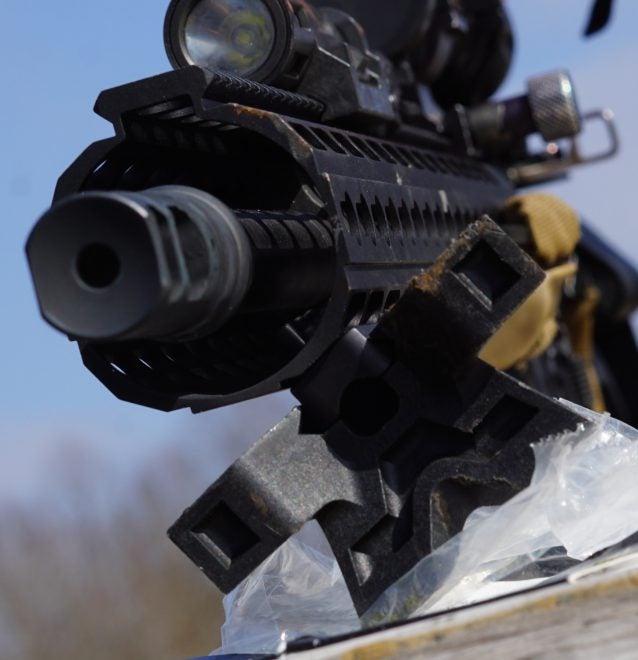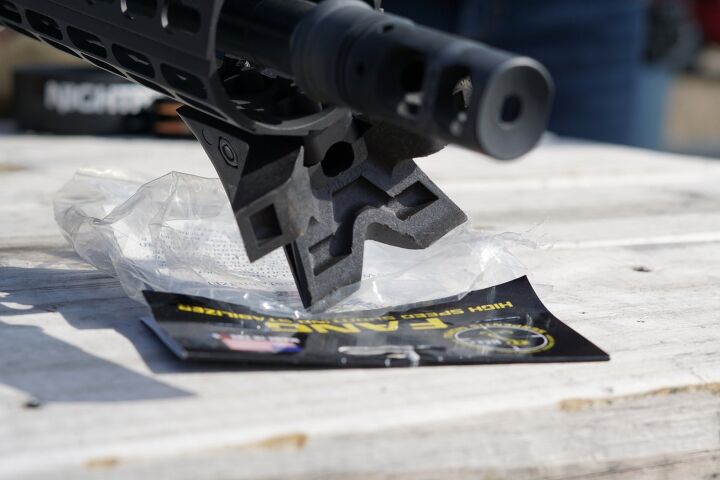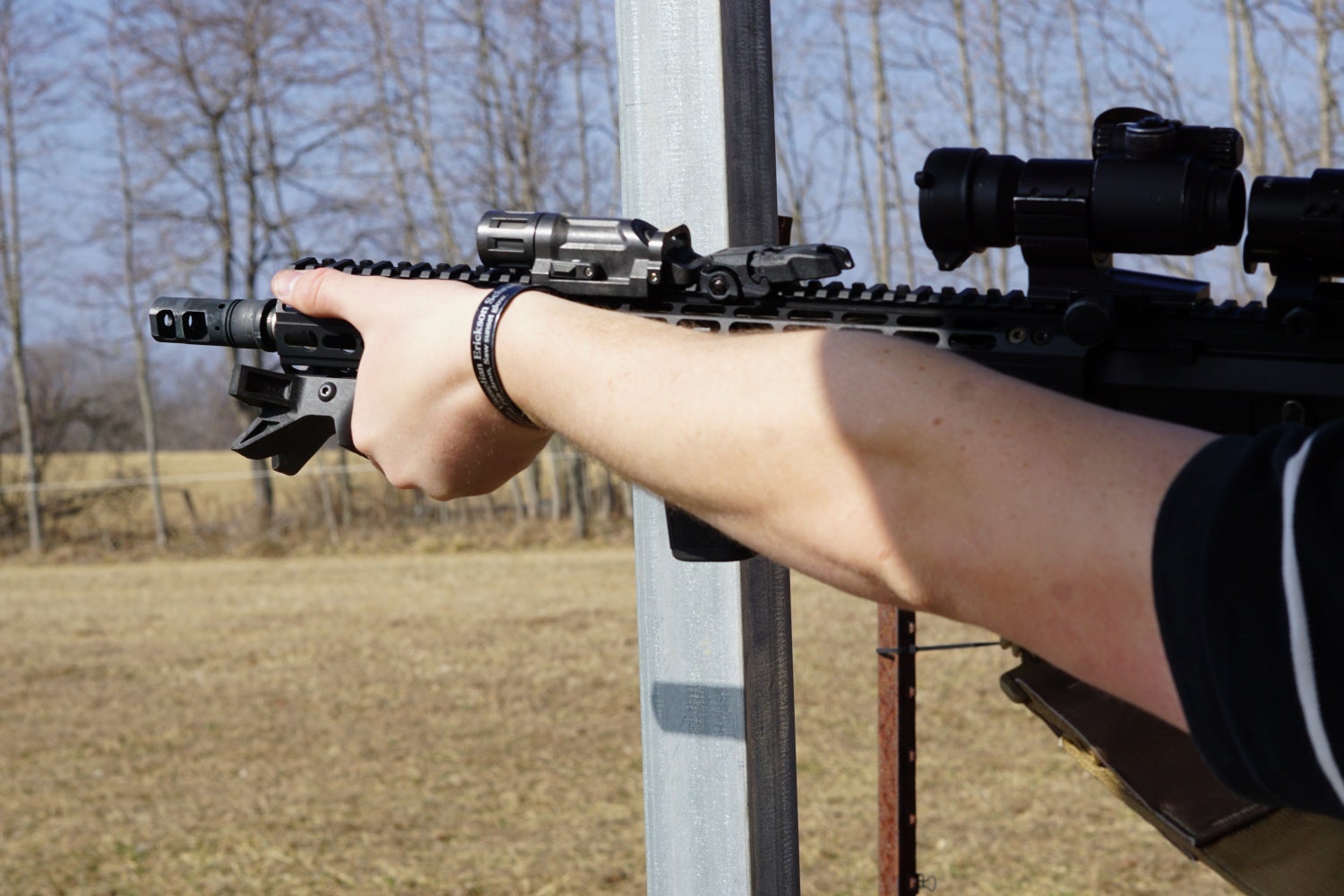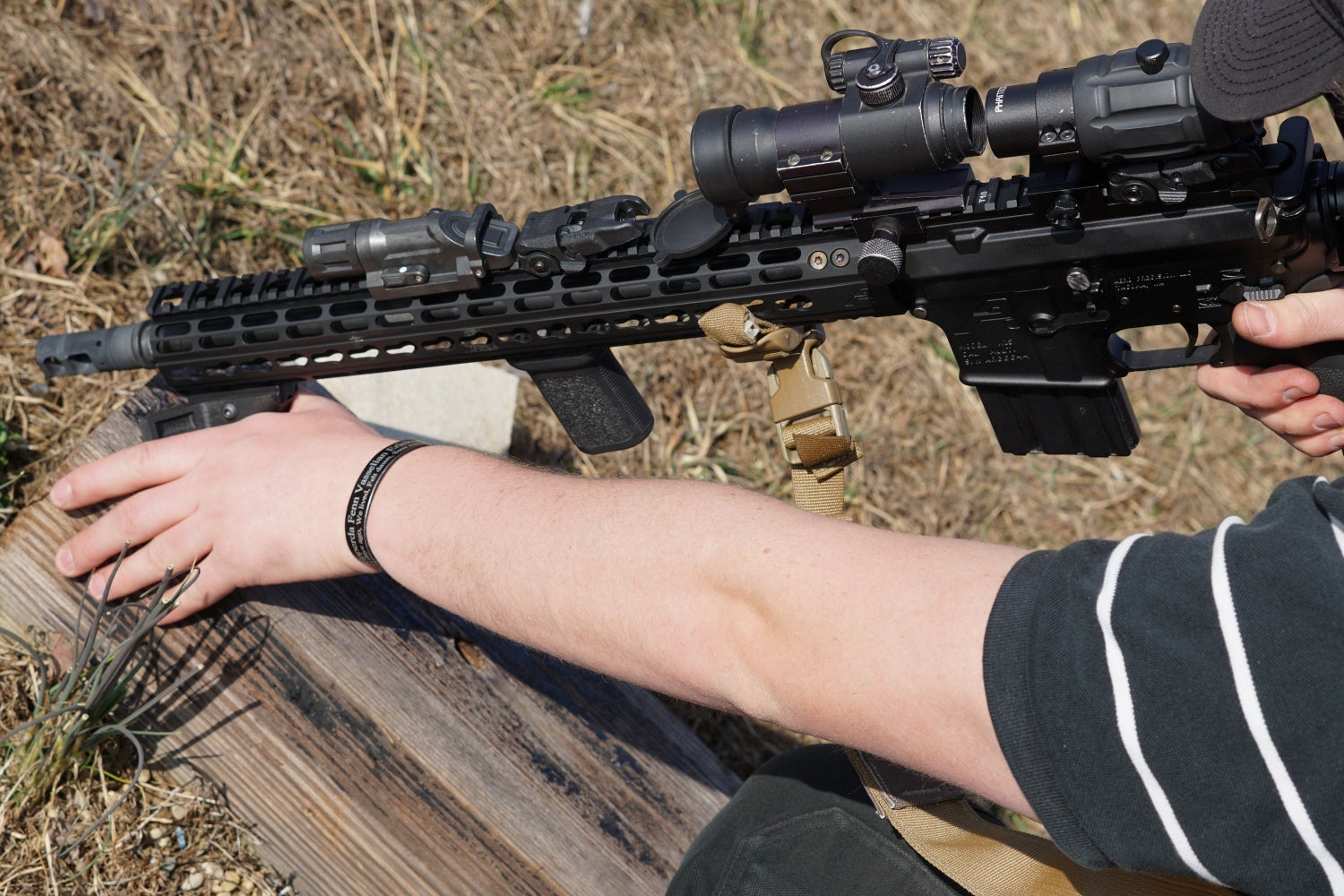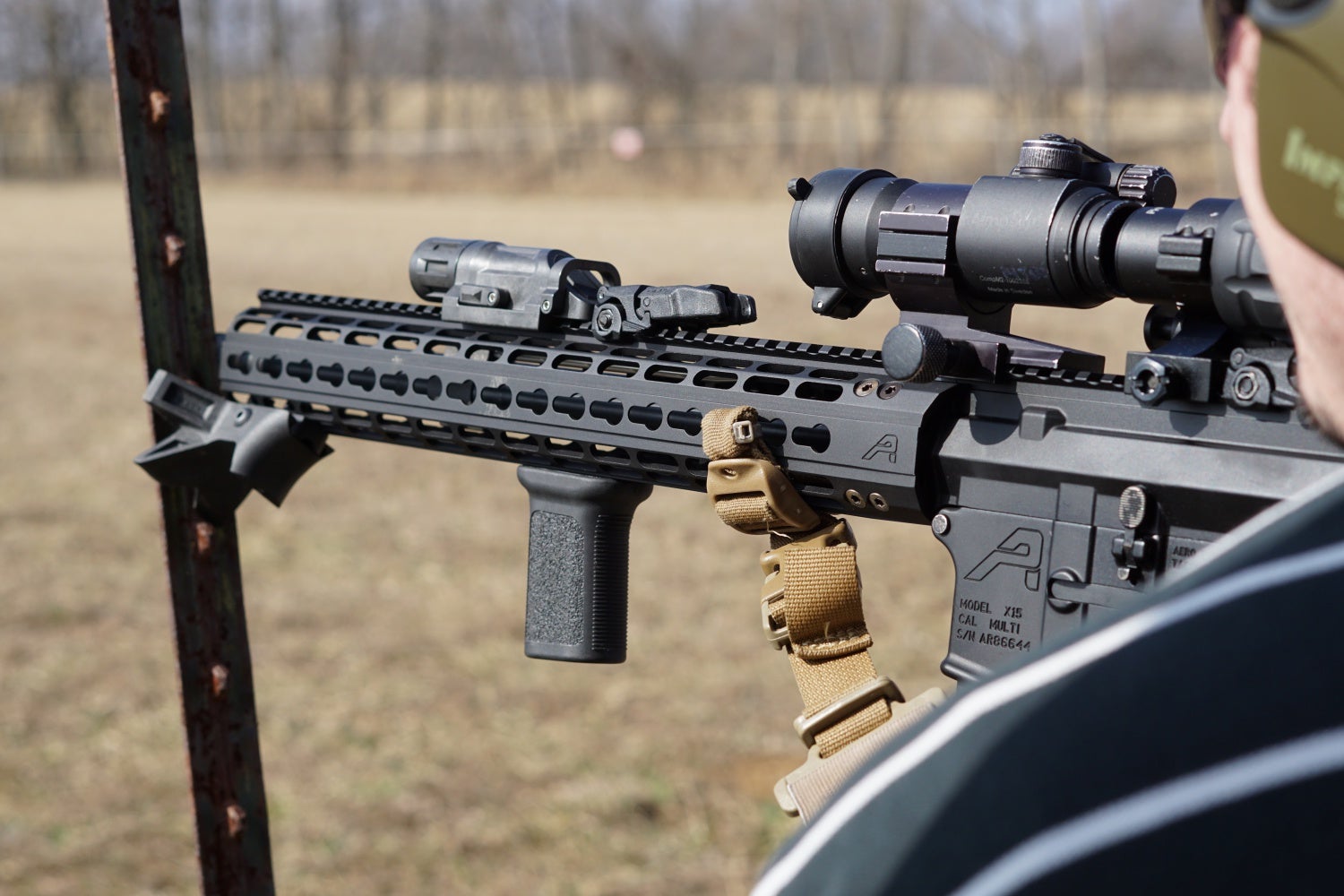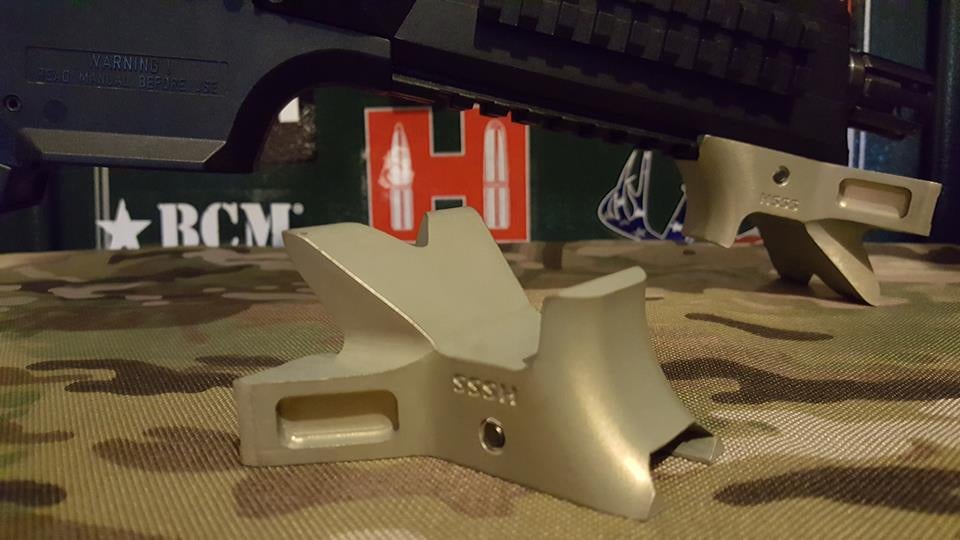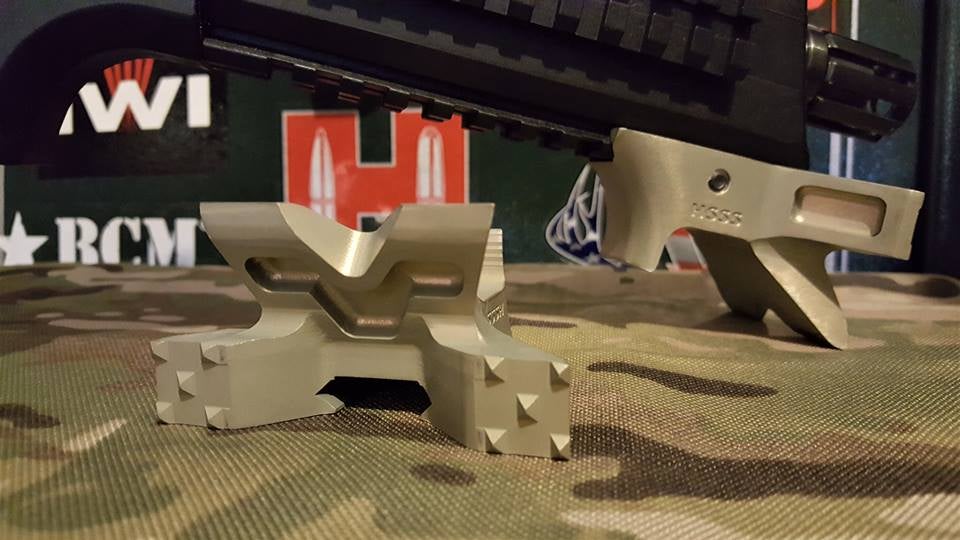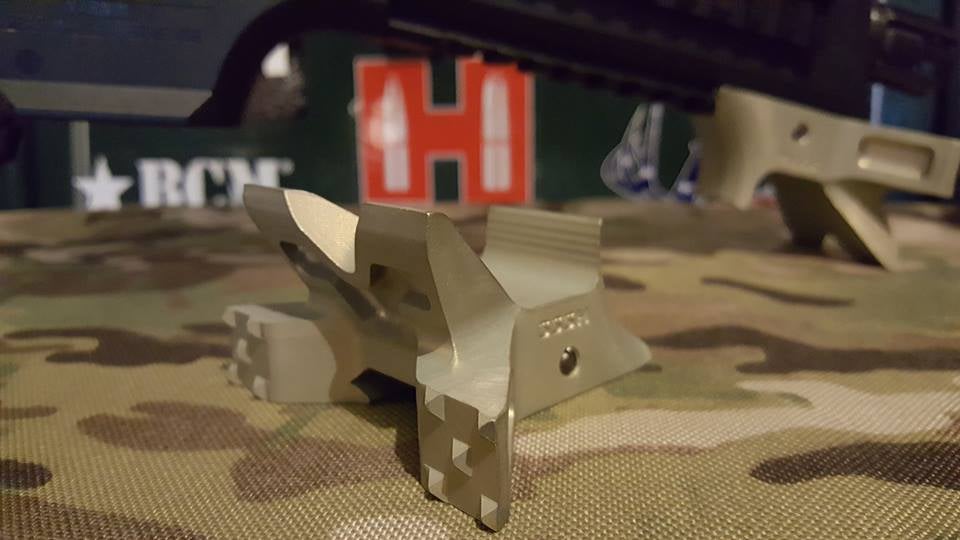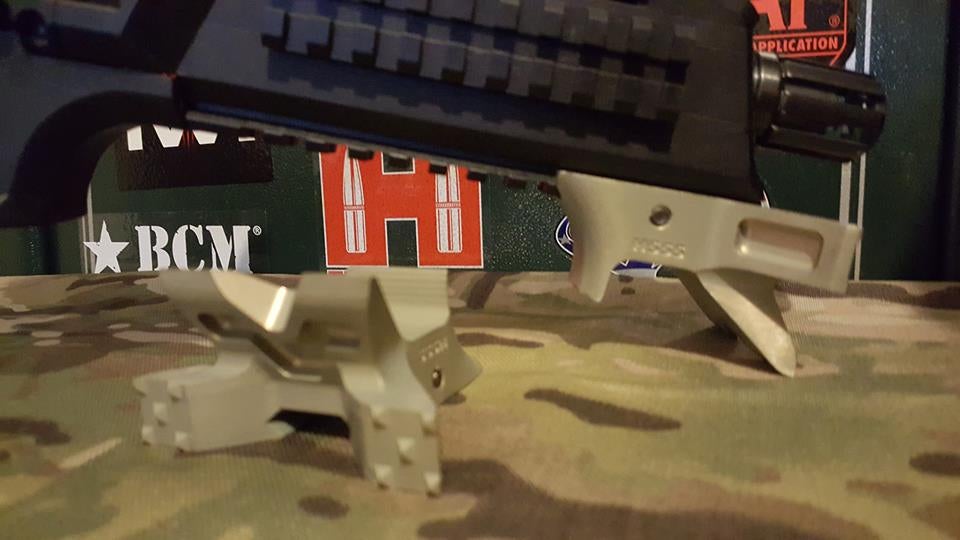The High Speed Shooting Stabilizer Fang is a neat product that we first reported on some months ago. We got our hands on one to test it in person. The device was pioneered by a fellow named James Renteria, a former Marine himself (aren’t we everywhere?), who developed the concept using 3D printers at home in Florida. Currently, his website offers the Fang in addition to the HABU cheek rest/charging handle.
The intent for the device is to act as a rest against an edge, in addition to being a forward stop as well. Although it can be used for shooting offhand, with only one hand on the rifle, it is better used as a general purpose stop to brace the rifle. Current designs are 3D printed and can be attached to a Picatinny rail using a screw and nut system. The company is expanding into an updated design that uses aluminum as the construction material as opposed to a polymer, in addition to adding a number of notches on it to aid in a better hand grip.
The stabilizing portion of the device relies on four legs that jut out at the 12 o’clock position. These can be used all at once or just portions of them can be used depending on the surface that the rifle is braced against. Fang can be installed on any portion of a Picatinny rail, or rail segments can be used to position it at any angle that a shooter wants. The screw anchoring the device to the rail is very secure and I can’t think of a reason why it would fail unless large amounts of excessive force were applied. However, the indentation that the nut and screw is placed in, isn’t snug enough to keep the nut in place when the screw is removed. Care must be taken to ensure it doesn’t fall out during installation or disassembly.
But does the Fang work? The general answer is yes, it does work very well. Both as a device to stabilize the firearm, also as a device to act as a forward hand stop with the rounded back portion. The difference is in how it is employed. My biggest quip with it is that if a shooter is stabilizing the rifle against a non-mobile surface, uses a single hand on the pistol grip, and fires it, the device has a tendency, with the force of recoil, to make the rifle ‘jump’ right back off of its position. I’ve demonstrated that in this video, firing a single round-
I’m not sure any stabilization device from any product could be made to alleviate this issue from the recoil. But using the Fang as a hand stop, and as a stabilizing support, turned out to be very useful indeed. In this video I’m actually just using a simple metal stake that has been driven into the ground to deliver extremely accurate results on target. Essentially anything that is vertical and can be braced against, can be used with the Fang-
But can’t you simply use the rifle against a vertical object with nothing but your hands and the rifle? Of course you can, but you certainly won’t be able to be as steady as you would with the Fang. In addition, the Fang helps keep the barrel away from the object. If you have a free-floating barrel, this helps a lot with not shoving the barrel against something and possibly torquing it one way or another, affecting accuracy.
So does it have a practical usage or is it just a gimmick like so many others on the current AR market? For Military usage I could see this as, useful for Infantrymen that need to take distance shots from 100-400 meters from a covered position where they could ledge it against a wall. In addition, it is useful as a forward grip, giving more usage than something like Magpul’s forward grip. However, for LE usage I don’t know how effective this would be, since much LE rifle usage is 100 meters and in, and moving very quickly. A purpose built forward grip would be more appropriate for this type of shooting.
But for a competitor’s standpoint, within the 3-gun, 2-gun and multiple other avenues that use Picatinny mounted rifles, I could see the Fang as very useful, in quickly bracing up against the various barricades during competition.
The Fang is selling for $44.99 on the company’s website, and comes in Black, OD Green, White, and FDE.
Below are photographs of the aluminum version-
 Your Privacy Choices
Your Privacy Choices
